- Qualcomm Launches Snapdragon 4 Gen 2 Mobile Platform
- AMD Launches Ryzen PRO 7000 Series Mobile & Desktop Platform
- Intel Launches Sleek Single-Slot Arc Pro A60 Workstation Graphics Card
- NVIDIA Announces Latest Ada Lovelace Additions: GeForce RTX 4060 Ti & RTX 4060
- Maxon Redshift With AMD Radeon GPU Rendering Support Now Available
A Performance Review: AMD’s Ryzen 5 2600X & Ryzen 7 2700X Processors

Following a deluge of leaks, AMD’s 2nd-gen Ryzen ‘Pinnacle Ridge’ CPUs have landed. These new ‘Zen+’ chips are built on a 12nm process, and bring in a brand-new chipset (even though the older chipset will work just fine!). Read on as we take a look at both the 8-core Ryzen 7 2700X, and 6-core Ryzen 5 2600X.
Page 3 – Rendering: (3ds Max 2015 & 2018), Blender, Cinebench, POV-Ray & V-Ray
(All of our tests are explained in detail on page 2.)
Design and rendering is one of the greatest areas of computing to benchmark to highlight the benefits of faster hardware, whether it be a CPU, GPU, memory, and even storage. On a low-end system, a production render might take hours, for example, whereas on a high-end system, that render could be shaved down to the tens of minutes.
With these results, it’s up to you to gauge where the best value can be found. In some cases, it might be beneficial to go with more modest hardware if the time-to-render isn’t of a great concern; in other cases, spending more on faster hardware might actually save you money in the long-run.
For our rendering tests, we use Autodesk’s 3ds Max (2015, for SPECapc, and 2018, for our real-world model render), the popular open source design suite Blender, as well as Cinebench, POV-Ray, and V-Ray Benchmark for some quick-and-dirty results.
Autodesk 3ds Max 2015 & 2018
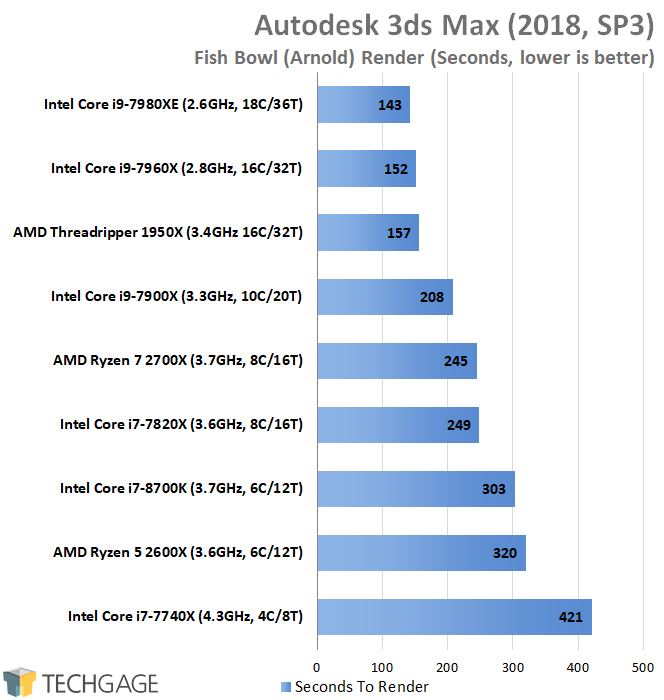
As of the time of writing, Arnold is only available as a CPU renderer, but that’s going to soon change with a revamped plugin that will tackle both CPU and GPU duties. Fortunately, for a CPU review, a GPU renderer doesn’t matter at all, so naturally, we see some very clean scaling with our render here.
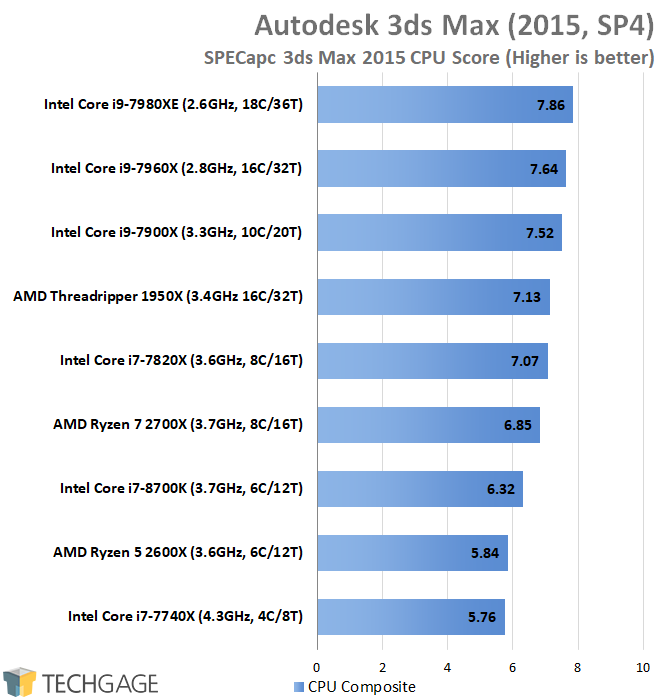
SPEC’s outlook on things paints a similar picture, with almost identical scaling across the board. In both 3ds Max tests, Intel’s lowly quad-core 7740X sits at the bottom, but that’s not a surprise given what it brings to the table. That said, what’s strange about that chip is that it falls so far behind in performance, yet costs generally the same as the new 2700X thanks to the fact it’s destined for the beefy X299 platform. A parallel would be AMD releasing a 1900X Threadripper with 8 cores to match the 1800X or 2700X, but eight cores is actually suitable for power users.
Blender
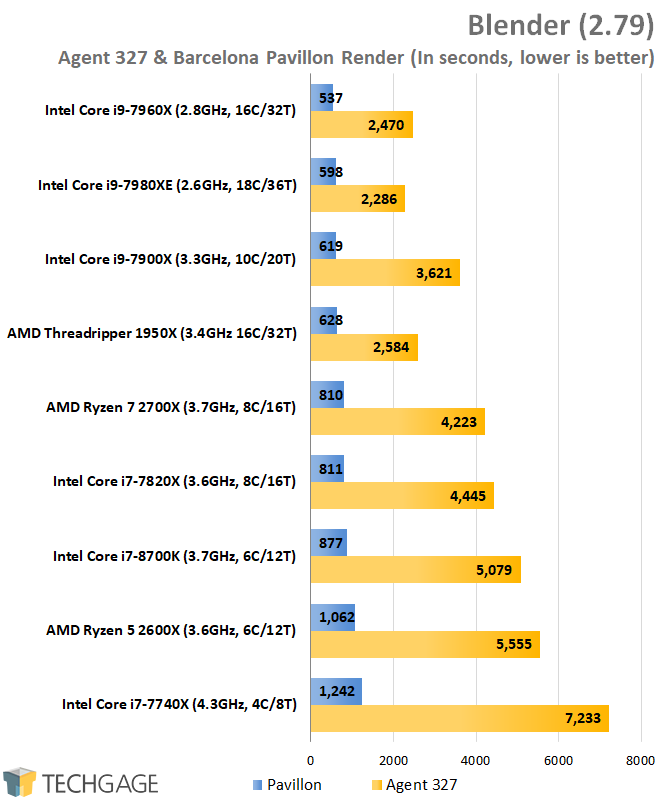
Based on these results, it seems like IPC matters quite a bit with Blender, but additional cores can help tighten the deltas between one chip and another. Nonetheless, in both cases here, AMD’s new 2700X beat out Intel’s six-core 8700K. If you’ve been familiar with Ryzen first-gen performance, this probably won’t surprise you too much. 8 AMD cores are faster than 6 Intel cores. Where Intel will strike back is with its optimizations for things like media, and in many cases, simply with its stronger IPC.
Another angle to look at things at is with the 2600X, and how it also performs against the 8700K. It carries an SRP of $219, at least $100 less than the 8700K, but despite that, it doesn’t lag too far behind – about 10 minutes on an 80~90 minute render.
Synthetic Renderers: Cinebench, POV-Ray, V-Ray
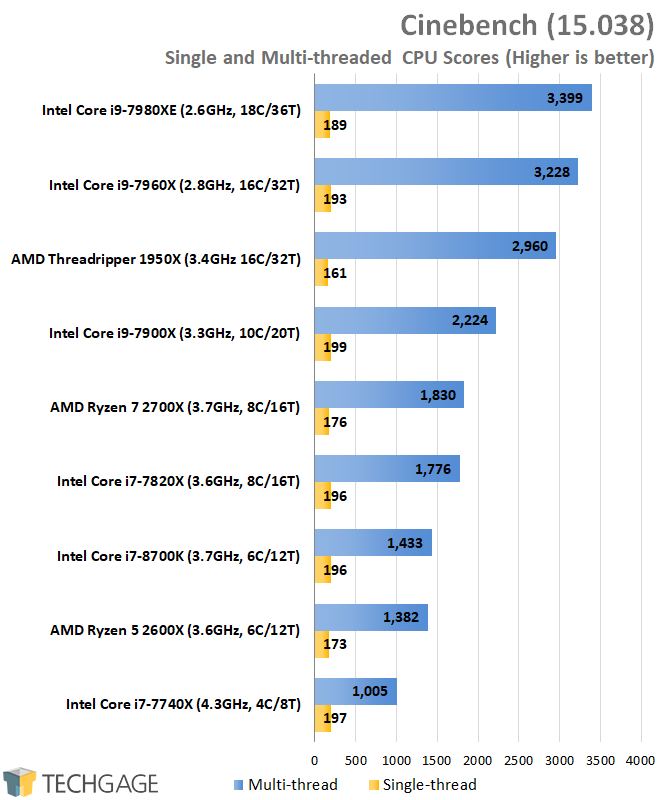
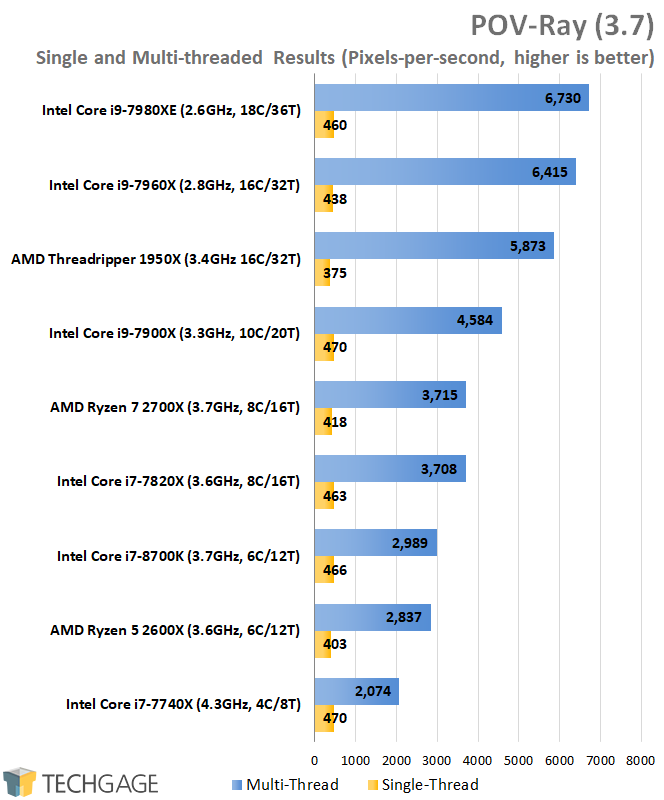
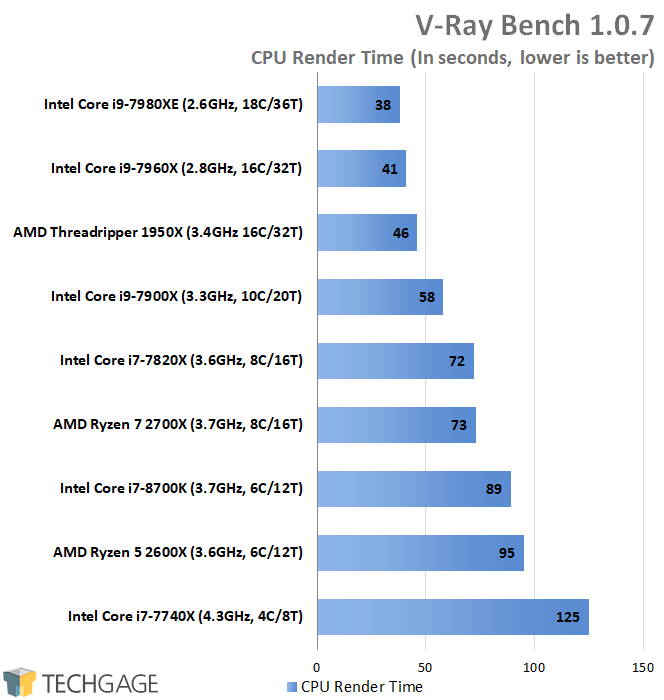
AMD continues to clean house across these synthetic renderers, with the 2700X outperforming the 8700K in every single one. I can honestly say that after spending a lot of time testing the real V-Ray plugin, that the CPU renderer works much better on AMD than the GPU renderer does. This renderer that’s existed since well before AMD was a serious competitor in the market uses the architecture so well, it allows the 2700X to really impress here (not just in V-Ray, but the others, too).
So far, AMD is really dominating at its respective price-points, but we will see a few examples coming up of where that’s not quite the case. Ryzen 2 doesn’t fix every Ryzen 1 wrong, but some of those wrongs are tied directly to optimizations not entirely in AMD’s control. Where raw compute is concerned, AMD delivers an explosive value, and these results prove it.
Support our efforts! With ad revenue at an all-time low for written websites, we're relying more than ever on reader support to help us continue putting so much effort into this type of content. You can support us by becoming a Patron, or by using our Amazon shopping affiliate links listed through our articles. Thanks for your support!





